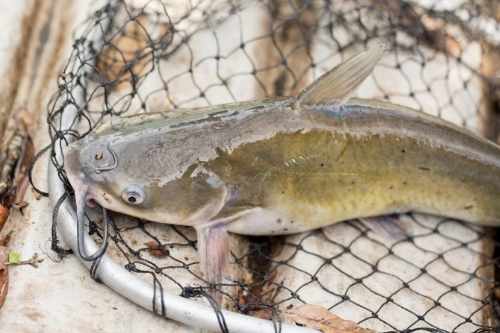Catfish are recognized all around the globe for their magnificent whiskers. It is a huge fish that may be found in both rivers and the sea. The whiskers and fat on this fish set it apart. It has the appearance of a cat, either in its whiskers or in its mouth.
The spines on the catfish’s dorsal and pectoral fins protect it against predators. It also has two barbels, one of which is larger than the other, a relatively wide head.
Many people wonder if these fish have bones, and one of the main reasons for this doubt is that today many are eating catfish more than ever. However, some do not feel safe with the idea of eating catfish.
Catfish is a wonderful protein-rich fish that adds variety to your diet. Catfish are purchased for a variety of reasons:
- They contain few calories.
- They are easily cooked.
- They are very delicious.
Each 3 ½ ounce dish of catfish has around 120 calories. This fish, like other seafood, has fewer calories per serving than chicken or pork. Catfish also have a low salt content.
Low-salt dieters and anyone who wants to prevent or decrease high blood pressure should pay close attention to this information. Catfish is high in calcium, iron, and other minerals that are beneficial to one’s health, and it is also easy to consume and digest.
Catfish are a very nutritious and essential food in many diets, and that increases the interest of many people to know if these animals have bones or not.
Table of Contents
Do Catfish Really Have Bones?
Yes! Catfish do have bones. They have the main bone that is similar to the spine and smaller bones that resemble ribs. An important fact is that those bones are large and orderly.
The main bone is located on the upper part of the catfish’s body, while the smaller bones are connected on both sides. Notably, these are stiff and short.
These fish have ridges on their spines, and the spine generally glides into a groove on the fish’s pelvic girdle. That improves the catfish’s swimming abilities.
There are also certain catfish that have bony plates on their skin known as “scutes.” The scutes serve as a sort of body armor, and they may be found on all catfish species.
The skulls of catfish are dorsoventrally depressed. The skull itself is made up of many bones, and those bones’ connections are exceedingly weak.
Surely you know that there are approximately 3000 species of catfish around the world, and each one of them has anatomical differences to some extent, but the bone structure of all is quite similar.
Does Catfish Fillets Have Bones?
Generally, when you buy catfish fillets in the market, they do not have bones since they are headed and gutted with or without the skin intact. These fillets are cut to be sold without bones and skin, and the best part is that you will not find the small spines that most fish have, so they will be quite comfortable to consume.
What If You Bought the Whole Catfish and Want to Cut It Yourself?
The first thing to know is that, as we have said before, catfish bones are large and orderly. This fact makes them easier to cut into fillets.
Even so, you must know the correct way to remove the bones of this animal. It is important that you know how to remove them properly before consuming this delicious fish. You will also avoid finding any bone while eating.
Cutting the catfish through the skin behind the head is the first step. Make the incision all the way around the “neck,” but don’t cut off the head. The fins should then be removed.
Now, the skin must next be removed from the body. Depending on the catfish species, this might be difficult and unpleasant. Furthermore, farm-reared catfish are easier and faster to clean than wild ones. This requires a sharp knife, a couple of pillars, caution, and a lot of patience.
Now that you have removed the skin, you can proceed to cut off the head of the catfish as well as remove the organs and guts.
You must now proceed to make the dorsal incision and a deep cut along the backbone in this step. You must now cut around the tail and then continue cutting from the bottom. Slowly cut the ribs and take caution when you get to them.
The goal is to remove all ribs from the fillet. After that, turn the fish and go through the process again. You’ll obtain a properly cut fillet this way.

